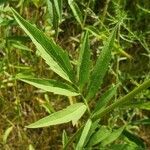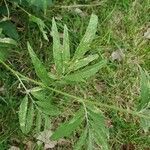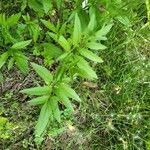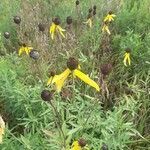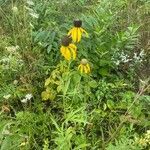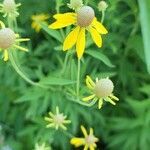Fibrous-rooted from a stout, woody rhizome or sometimes a short caudex, 4–12 dm, ± hirsute, or the stem strigose above; lower lvs long-petioled, the upper short-petioled or sessile; lf-segments lanceolate, acute, coarsely toothed or entire; heads usually several, naked-pedunculate; disk ellipsoid-globular, 1–2 cm, 1–1.6 times as long as thick, much shorter than the rays, these pale yellow, (2.5–)3–6 cm, spreading or often reflexed; style-appendages elongate, acuminate; achenes smooth; pappus none; 2n=28. Prairies, old fields, and dry woods, often on limestone; s. Ont. to Minn. and S.D., s. to Tenn., Ga., w. Fla., La., and Okla., and adventive e. to Vt. and Mass. June–Aug.
